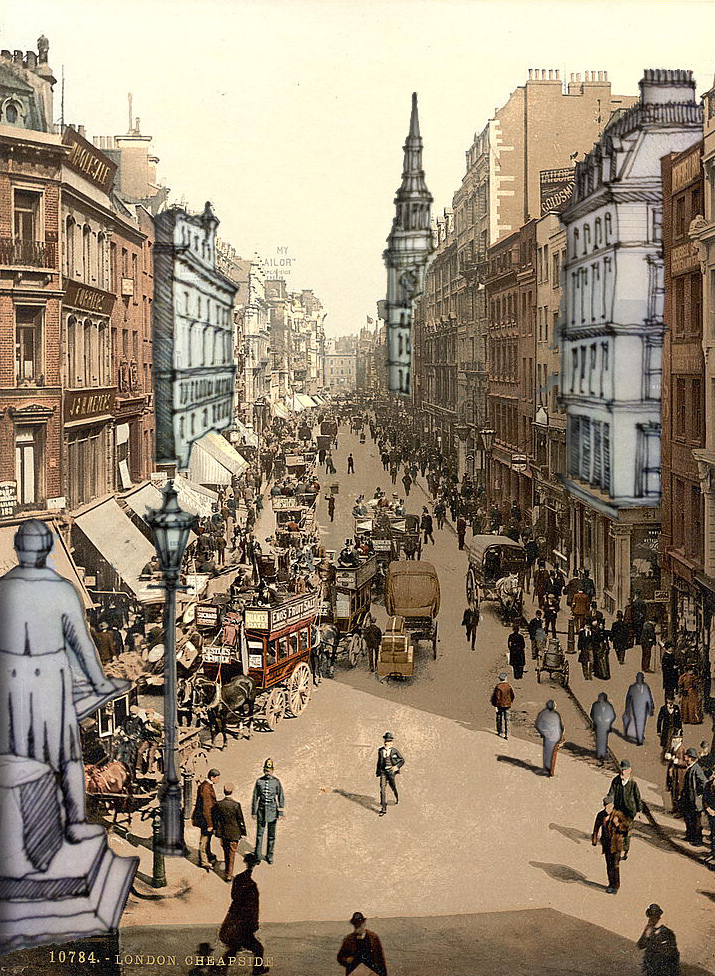
Process of Coming to Know
I was just putting the finishing touches to this ebook on mobile learning in the Humanities and am finding that some of my thoughts on how mobile learning stimulates the study of history (in particular) are crystallizing. So much so that I want to go back and rewrite some of the chapters. Alas, I will be saving those observations for another day. I found that the process of illustrating the book with my sister has helped clarify and expand upon some early ideas I had on the use of mobile technology in history and what it means for the average learner.
The process unfolded in an interesting fashion. I toyed around with my mobile technology and made media supporting history (sometimes accidentally), wrote about that media and that relevance to history, and then presented those impressions to my sister who crafted these illustrations. When I looked at them, I noticed new facets that I had overlooked. New spaces into which meaning could be inserted. New processes or activities to try. This is exactly what collaboration does for me.
One of these new facets was the property of the learning taking place in mobile learning when focused on history. It takes the study of history and immediately removes its inevitability (itself a fallacy) and makes it a lived experience. It places it firmly in a geographical context and demonstrates to the learner that the environment itself is partly responsible for the outcome. Walking the same steps on the same streets with the same set of decisions ahead of you, the learner ‘feels’ the choice being made, the one that defined the historical event.
History as Immediate and Emerging
The hand drawn aspects of the illustrations revealed their assembly and emergence to me. They present learning in history as a perpetually emerging event. We are constantly constructing our relationship to our past through correlations in our present. We incessantly revisit these understandings and build meaning in the present. We use and reuse these historical materials as mortar for a momentary understanding. History emerges from our experiences in the now, at this moment. Mobile learning emphasizes that immediacy and emergence through the presentation of juxtaposition (images of the same location both then and now) and through functionality of media composition (the learner can slam together any media to make meaning, regardless of consistency or disciplinary specific use).
So learning in history ceases to be a referential equation (researching the past to understand the past) and becomes a supplemental equation (researching the past to understand the present). Both equations are valid and neither will replace the other. But mobile learning makes one more immediate, more perplexingly urgent to our present. We learn from history that we will constantly revisit history to inform our present.
That ultimately positions the learning in much a different way for pedagogy. The cognitive experience for the learner shifts a bit. It becomes a matter of constant experimentation and creation born out of a curiosity than one of a truth or knowledge being uncovered. In mobile learning, understanding is assembled, not discovered. While much of this is encapsulated in constructivism or any of the socially-minded theories of learning, this process of coming to know is incessant and incredibly urgent in mobile learning. Something to consider if you choose to work it into your existing curriculum. The book outlines some mechanisms for making mobile learning field activities systematic, but there is a bit that needs to be reconciled with the existing curriculum of formal education.
These illustrations helped me realize the urgency of the whole business. How curiosity and creativity are emergent, playful, and incessant. Perhaps curiosity itself is re-emerging as the most valuable attribute of learning.
